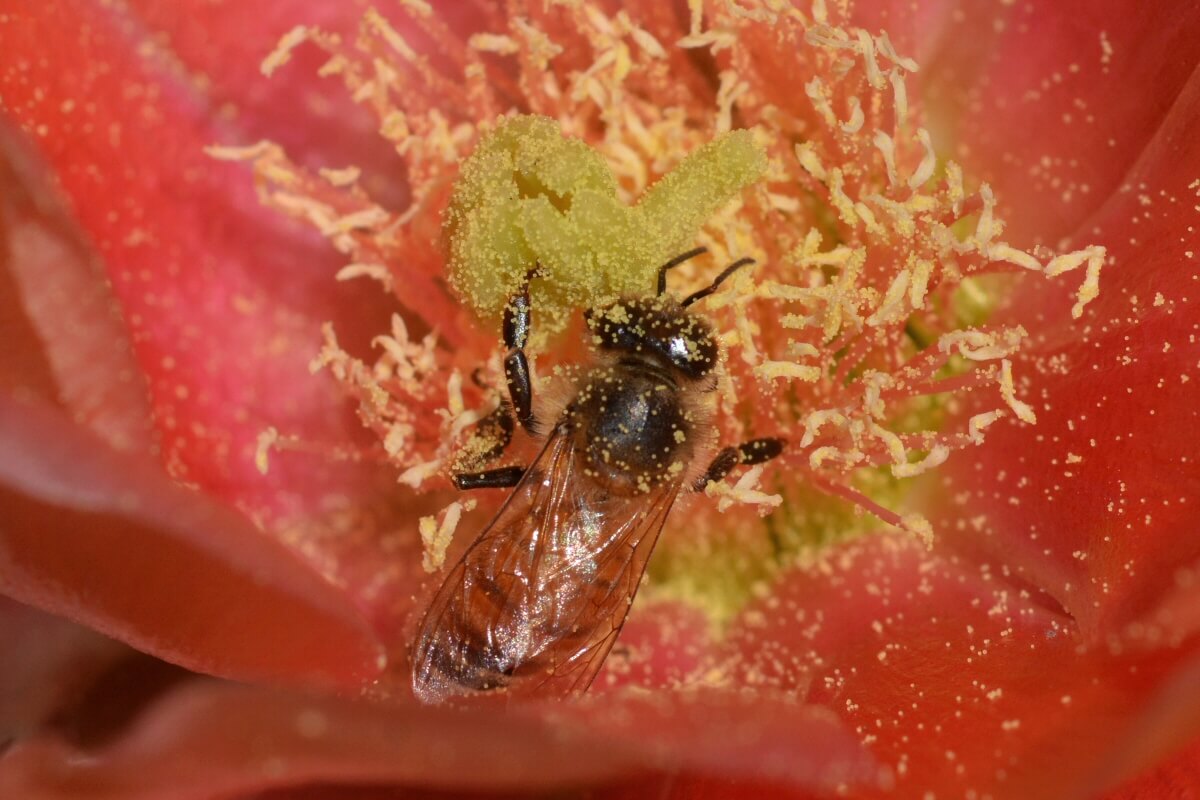The flowers of a plant are designed for the purpose of making seeds. If a flower is pollinated, then fertilization can take place, and a seed develops in the ovary of the plant. This is sexual reproduction, and ensures genetic diversity. As the fertilized seed develops, so does the fruit (pome, pod, or capsule, etc.) which surrounds the seed.
But, first let’s get back to real basics; flowers need to be pollinated to start the whole process of seed formation. There are many different agents of pollination employed by different genera of plants; wind, water, insects, birds, and mammals. Insects are by far the most common agent of pollination amongst the flowering plants, or Angiosperms. Flowers developed to attract insects and facilitate cross-pollination, and thereby create ample genetic diversity. Flowering plants often co-evolved with particular insect species so that their life cycles coincided.
Many insects are important pollinators, and flowers developed as sometimes really clever lures offering rewards, such as nectar and pollen, for the service provided. A garden would be a sterile, lifeless place without insects. So, when humans use insecticides around the home and especially in the garden, there is far-reaching damage done. By destroying these important players in symbiotic relationships that have evolved over millennia, we also have a damaging effect on the viability and diversity of the plant kingdom; and (as the concern over the crisis with honeybee colonies demonstrates) our own food supplies could also be jeopardized.
Flowers are the sexual organs of a plant. Stamens are the male reproductive parts and consist of a stalk, or filament, with an anther on top, from which the pollen grains are distributed. Female reproductive parts are collectively called the pistil, and consist of three parts; the stigma, the style, and the ovary. It is the ovary that enlarges to become the ‘fruit’, which in botanical terms is the receptacle that contains the ripe seed; whether it’s an apple, a pea pod, or the seed capsule of a Columbine. When both male and female parts are contained within one flower it is termed a ‘perfect’ flower. Sometimes male and female parts are found on separate flowers on the same plant, sometimes on separate (dioecious) male and female plants.
During the course of pollination a grain of pollen is moved, often by an insect, from the anther of one flower onto the stigma of another flower. If the pollen is compatible, hormones contained in the female plant parts set the fertilization process in motion. There are two cells in each pollen grain; one cell grows into the pollen tube, and the other cell divides into two sperm cells. The pollen tube grows down through the style to reach the ovary. The two sperm cells are then able to move down through this tube; where one fertilizes an ovule, or immature seed, and the other creates the endosperm, which is the food supply for the developing embryo, and later, in the form of cotyledons, also provides a food store for the newly germinated seedling. Until the embryo is fully developed, it is connected to the parent plant by a placenta. It is fully dependent on the parent plant for water and nutrients, which are received through this placental connection. Once the embryo is fully developed, and food storage reserves are in place, the seed coat starts to harden, and tissues within the ovule loose water.
When fully desiccated the seed contains about 5% moisture, and is considered ‘ripe’ when it readily separates from the parent with no attached plant parts. (Compare that to mature plants which are about 95% moisture!) This is the definition of an ‘Orthodox’ seed, which can often survive for decades, and sometimes even longer, as a viable entity if properly stored. ‘Recalcitrant’ seeds have a higher moisture content, such as acorns and other nuts, and are only viable as long as the fleshy tissues remain moist.
Mature plants are termed ‘auto-trophic’ because they make their own food molecules from non-living sources; such as carbon dioxide, water, minerals, and the energy from sunlight. As seeds, and as seedlings still relying on the cotyledons, however, they are ‘hetero-trophic’ (just like most creatures) because they rely on this stored food supply until the true leaves develop, and they are able to photosynthesize and create their own food energy.
There are many different types of seeds, often encased in distinctive capsules. Many fruits have evolved clever tactics and ploys to solicit help with distribution of a plants progeny. To summarize, whether the seed is dust-like, and ‘Orthodox’, such as that of Mimulus, or the substantial, ‘Recalcitrant’ nut of the Buckeye; classification of plants is according to flower, and thereby fruit structure.
The best way to learn plant species ID is to really learn and understand the characteristics of specific genera and the larger plant family groupings. Learn to look for similarity in the attributes of flowers and fruits when trying to identify a plant, then compare these structures to those of plants you are familiar with. Once you’re pretty certain that an unidentified plant shares the characteristics of a plant family or genera, it is easier to narrow down the search to a particular species.
Two books I have found to be readable, interesting, and very useful for a home gardener wishing to learn more about botany and plant classification are:
‘Botany for Gardeners’ by Brian Capon( Timber Press, 2005)
‘Botany in a Day; The Patterns Method of Plant Identification, By Thomas J. Elpel (HOPS Press, LLC, 2006)
Did you know that in the world of botany there are ‘floral formulas’? I found this fascinating, and very useful in learning the plant families! For example; in the Mustard family the floral formula is by 2’s and 4’s – In the Lily family the floral formula is by 3’s and 6’s –


